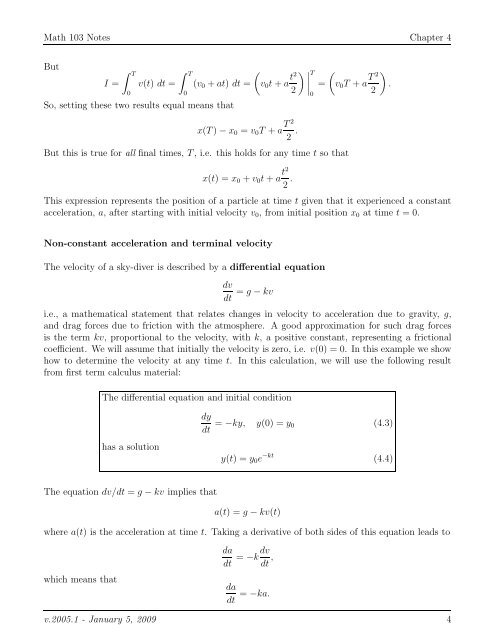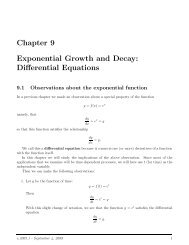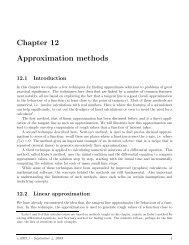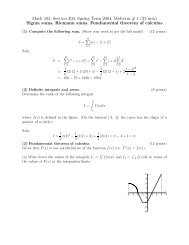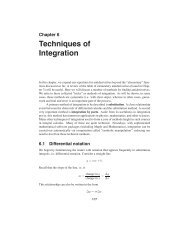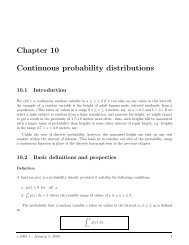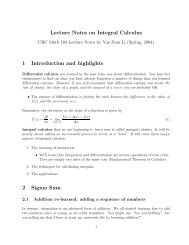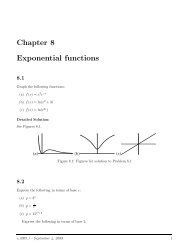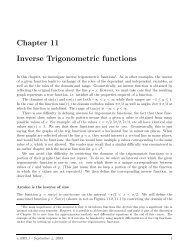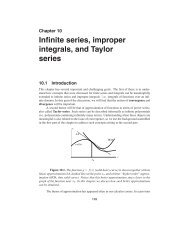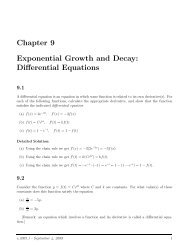Chapter 4 Applications of the definite integral to rates, velocities and ...
Chapter 4 Applications of the definite integral to rates, velocities and ...
Chapter 4 Applications of the definite integral to rates, velocities and ...
Create successful ePaper yourself
Turn your PDF publications into a flip-book with our unique Google optimized e-Paper software.
Math 103 Notes <strong>Chapter</strong> 4ButI =∫ T0v(t) dt =∫ T0(v 0 + at) dt =So, setting <strong>the</strong>se two results equal means that( ) ∣ ∣∣∣v 0 t + a t2 T20x(T) − x 0 = v 0 T + a T 22 .=(v 0 T + a T 22But this is true for all final times, T, i.e. this holds for any time t so that).x(t) = x 0 + v 0 t + a t2 2 .This expression represents <strong>the</strong> position <strong>of</strong> a particle at time t given that it experienced a constantacceleration, a, after starting with initial velocity v 0 , from initial position x 0 at time t = 0.Non-constant acceleration <strong>and</strong> terminal velocityThe velocity <strong>of</strong> a sky-diver is described by a differential equationdvdt = g − kvi.e., a ma<strong>the</strong>matical statement that relates changes in velocity <strong>to</strong> acceleration due <strong>to</strong> gravity, g,<strong>and</strong> drag forces due <strong>to</strong> friction with <strong>the</strong> atmosphere. A good approximation for such drag forcesis <strong>the</strong> term kv, proportional <strong>to</strong> <strong>the</strong> velocity, with k, a positive constant, representing a frictionalcoefficient. We will assume that initially <strong>the</strong> velocity is zero, i.e. v(0) = 0. In this example we showhow <strong>to</strong> determine <strong>the</strong> velocity at any time t. In this calculation, we will use <strong>the</strong> following resultfrom first term calculus material:The differential equation <strong>and</strong> initial conditiondydt = −ky, y(0) = y 0 (4.3)has a solutiony(t) = y 0 e −kt (4.4)The equation dv/dt = g − kv implies thata(t) = g − kv(t)where a(t) is <strong>the</strong> acceleration at time t. Taking a derivative <strong>of</strong> both sides <strong>of</strong> this equation leads <strong>to</strong>dadt = −kdv dt ,which means thatdadt = −ka.v.2005.1 - January 5, 2009 4


